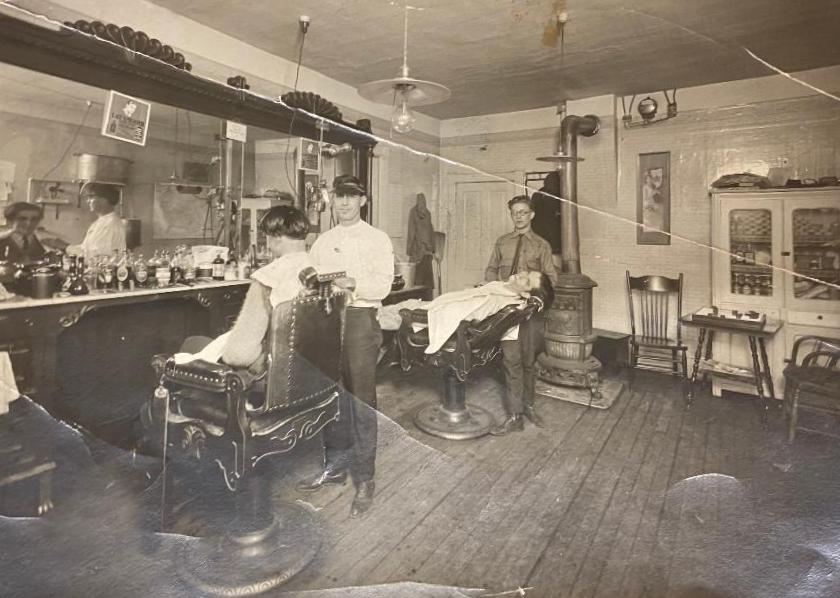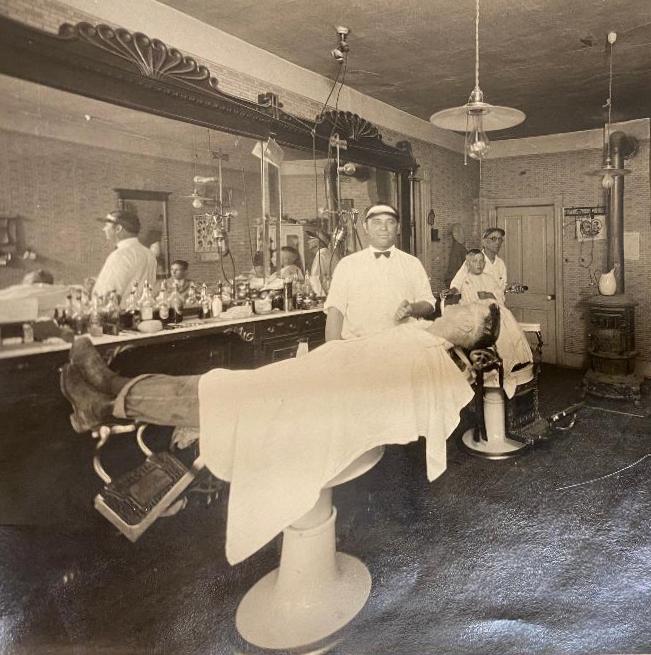Barber poles were once spotted outside nearly every barber shop in America, but did you know the widely recognizable striped pole originated from a practice known as bloodletting? Bloodletting is the removing of blood from a patient in order to prevent or treat an illness and is believed to date back 3000 years ago to ancient Egypt. The body was believed to be divided into four sections or fluids which had to be kept in balance, and an excess of blood was thought to lead to all sorts of ailments from colds and headaches to heart conditions and hearing loss. Though bloodletting was widely practiced, some physicians believed that they were “above” performing this service and referred their patients to barber-surgeons, also known as tonsorial artists, who performed a range of minor medical practices such as pulling teeth and dressing wounds.
Using a lance or sharp piece of wood, a client’s vein would be lanced, allowing their blood to flow into a vessel or bowl. In medieval London, barbers placed bowls of their customers’ blood in their windows to advertise their business, a not-so-subtle reminder to passersby that they may be overdue for their regular bloodletting. This practice was ceased in 1307 when London passed a law forbidding this form of advertising. But barbers still needed a way to let potential customers know that they provided this service.
Originating from the rod that the patient gripped to make their veins bulge, the barber’s pole was born. A brass ball placed at the top of the pole symbolized the basin that collected the blood, and the stripes represented the bloodied bandages which would be washed and hung to dry on the rod outside the shop. The bandages would twist in the breeze and form the spiral pattern seen on barber poles. A 1540 London statute required barbers and surgeons to distinguish their services by the colors on their barber poles. That is when blue was introduced with barbers using blue and white poles and surgeons using red and white.
Europeans brought the practice of bloodletting with them to the United States. President George Washington died in 1799 after being drained of roughly 40% of his blood in a 24-hour period. The U.S.’s first president awoke with a sore throat and died the next day. All these years later, doctors and scientists have still not come to a consensus whether a throat infection, loss of blood or something else killed Washington; however, they can agree that the bloodletting certainly did not help him.
By the late 1800s, prominent physicians began discrediting bloodletting, and new treatments and technologies began taking its place. The barber pole, however, remained. Today many American barber poles are red, white and blue. While some sources attribute this to the colors of the American flag, others say the red represents arterial blood, the blue represents the non-oxygenated blood in the veins, and the white represents the bandages.




SOURCES: National Constitution Center; Colonial Williamsburg; Huffington Post; A History of Barbering; archives of the Lakin papers, and Museum archives.
NOTE: While the pictures attached with this article are of the Smith Family of Lakin who included three generations of barbers, there is no evidence that bloodletting was ever practiced by barbers in Kearny County.
